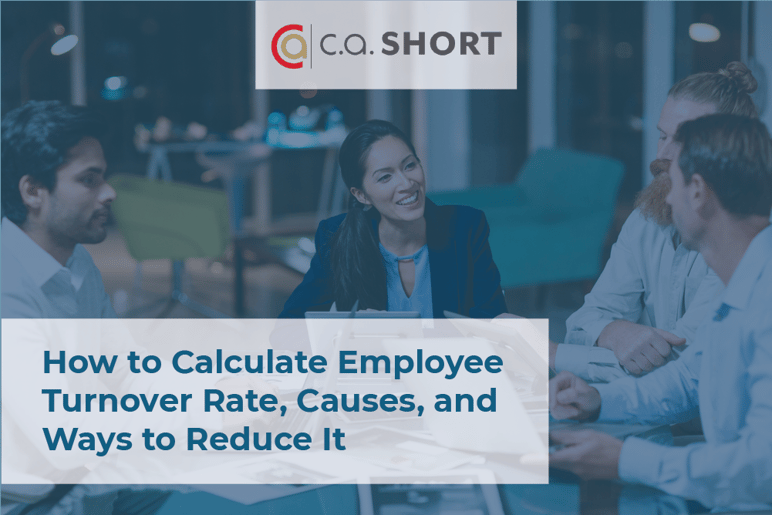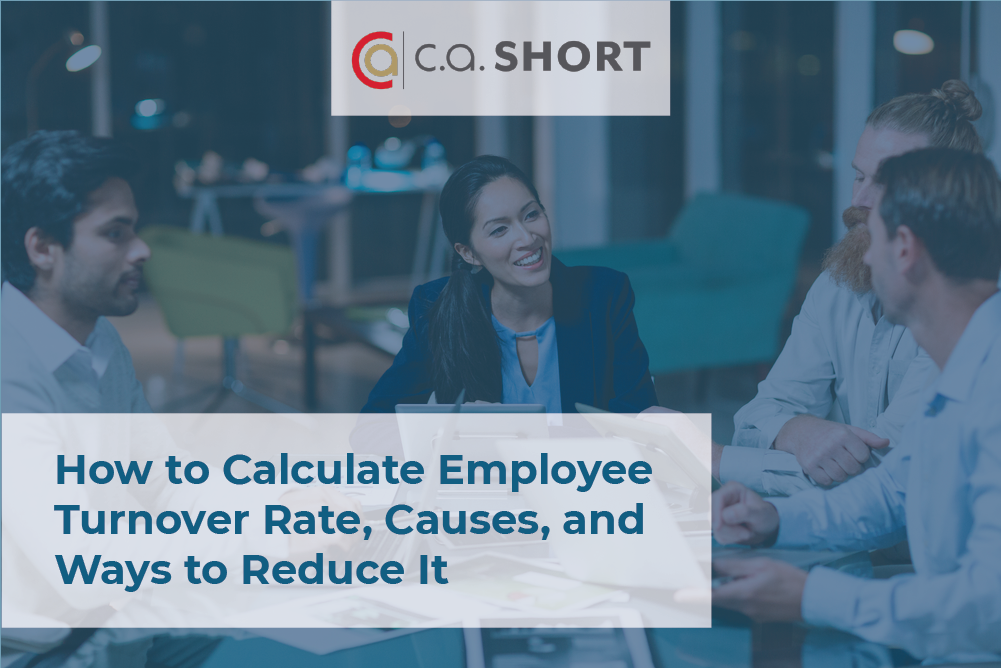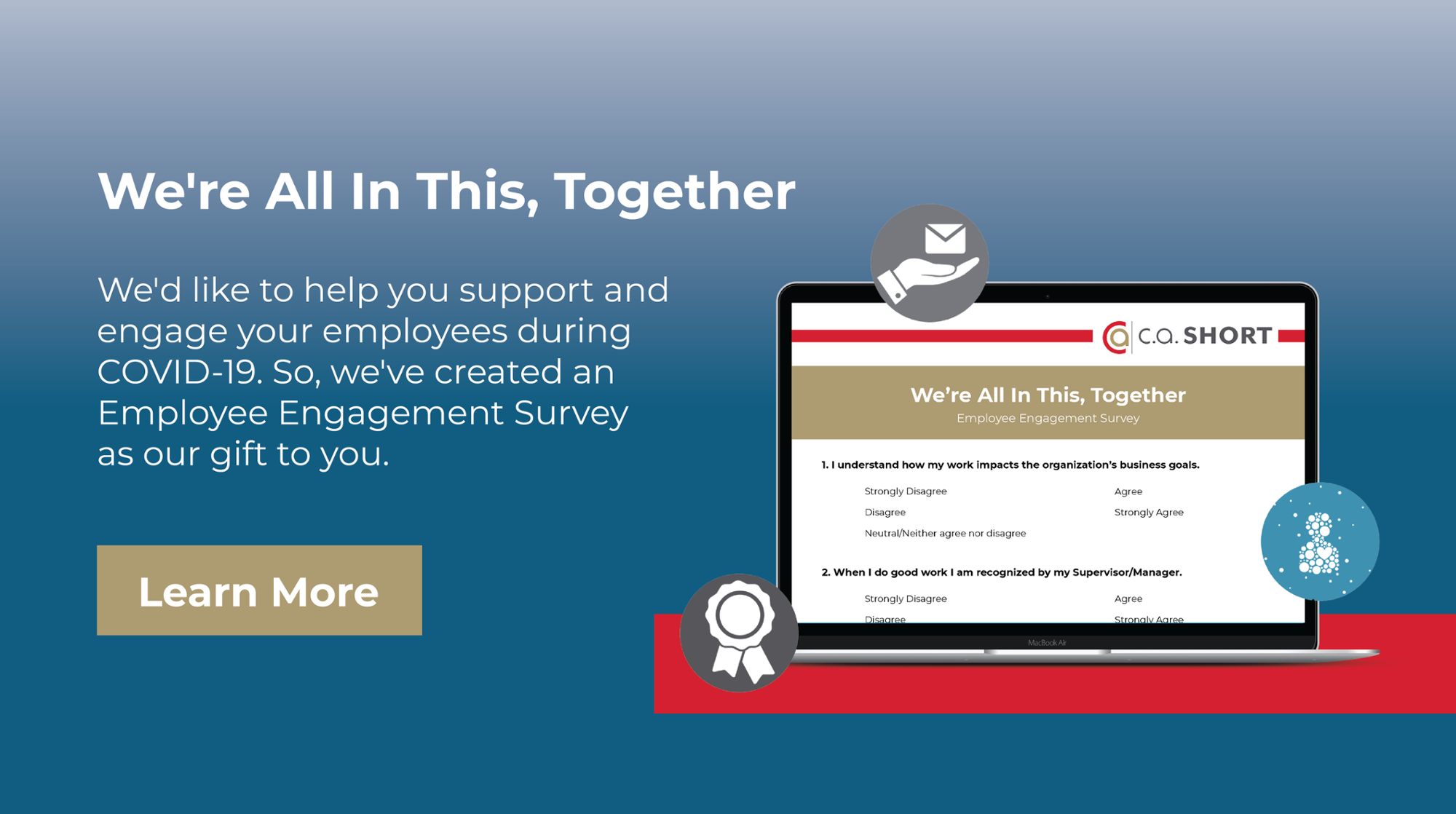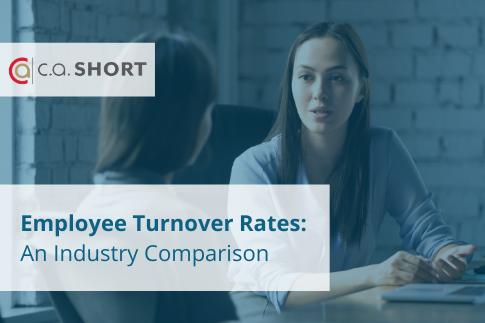
In any business and organization, our people are the framework to success. Without dedicated and hardworking employees, your business may lack in a variety of ways such as teamwork, productivity, profitability and engagement. If you’re constantly experiencing turnover there may be some underlying internal issues that could be hurting your business. Today we will be discussing how to calculate your employee turnover rate, as well as the causes that could be affecting it.
Calculating Employee Turnover Rate
To calculate your employee turnover rate, you should divide the total number of people leaving in a month by your average number of employees remaining in a month. Then, multiply the total by 100. The number left is your monthly employee turnover as a percentage. This calculation can also be used to calculate employee turnover for the year.
Different industries have different expected turnover rates with an average monthly turnover rate for all employment being 3.2 percent. Industries with higher turnover rates include trade, transportation, construction, and hospitality and leisure organizations. These industries often experience monthly rates as high as 5.0 percent.
What Causes Employee Turnover?
Toxic Culture
When searching the reasons for high turnover, the first step is often to look at the company culture within the workplace. Company culture is always evolving, changing and serves as the foundation for attitudes and values within the company. Lack of communication, office cliques, and bad management are just a few contributors to a toxic culture.
To an employee, a job is more than just work. Employees are constantly looking for the best fit for themselves and their personal goals. If the organization’s culture is not up to par, employees will likely search for new jobs. By encouraging workplace relationships through team-building activities, as well as effectively communicating strategy and goals, you can aim to stimulate a positive culture and working environment.
Feelings of Being Overworked
For many organizations, there are at least a few employees wearing multiple hats and performing multiple jobs. Combined with economic pressures and a demand for efficiency, organizations have started to demand more of their employees. In the wake of COVID-19 with multiple downsizes and restructuring, many employees could be faced to work longer hours or on the weekends. This imbalance of work and personal life can turn into a driving factor for turnover and pushing employees to search for other opportunities. Employees may be experiencing burnout and will ultimately hurt team productivity in the long run.
Boredom or Disengagement
To produce the most productive employees, you must promote engagement and continue to motivate and inspire. Without employee engagement you may see social withdrawal from the team, a decrease in quality of work, or an increase in absenteeism. Disengaged employees can also affect your company culture, creating a domino effect within the team.
Implementing an employee engagement program can help you easily recognize and reward your employees for accomplishments, while boosting employee morale. Our People Are Everything™ program simplifies the recognition process, giving you access to engagement scores and trends in an easy-to-use dashboard. You can continue to monitor engagement over time, while working to increase productivity and improve employee satisfaction.
By partnering with the C.A. Short Company, we can help you identify important KPIs essential to your business, while helping you craft a program catered to your overall success. We have over 25 years of experience helping businesses build successful engagement programs aimed at decreasing employee turnover and stimulating a positive work environment. Contact Us today to schedule a demo or learn how our employee engagement programs can help your business!






.jpg)



SHARE